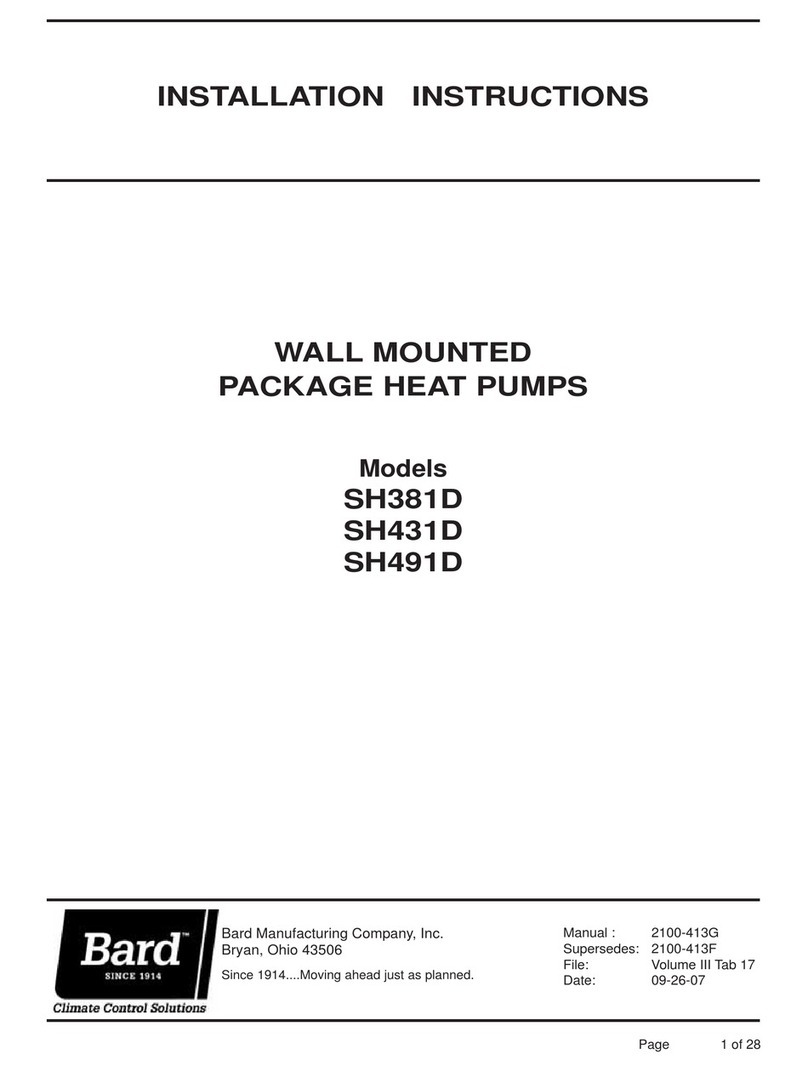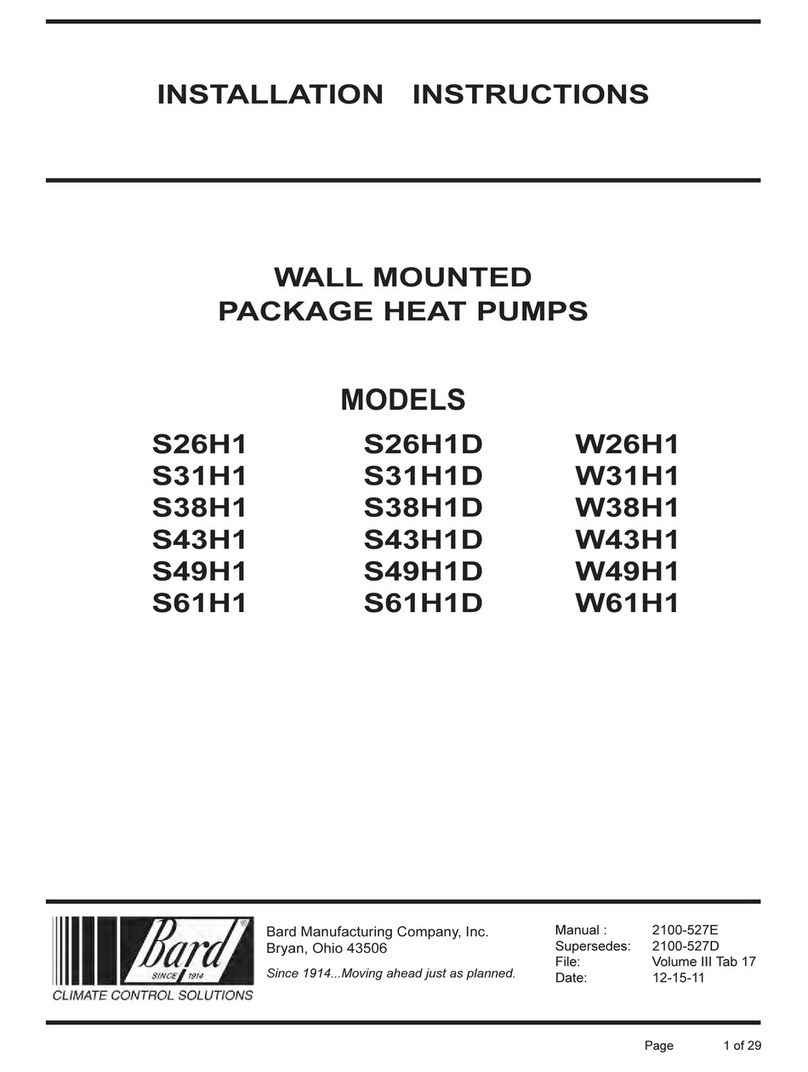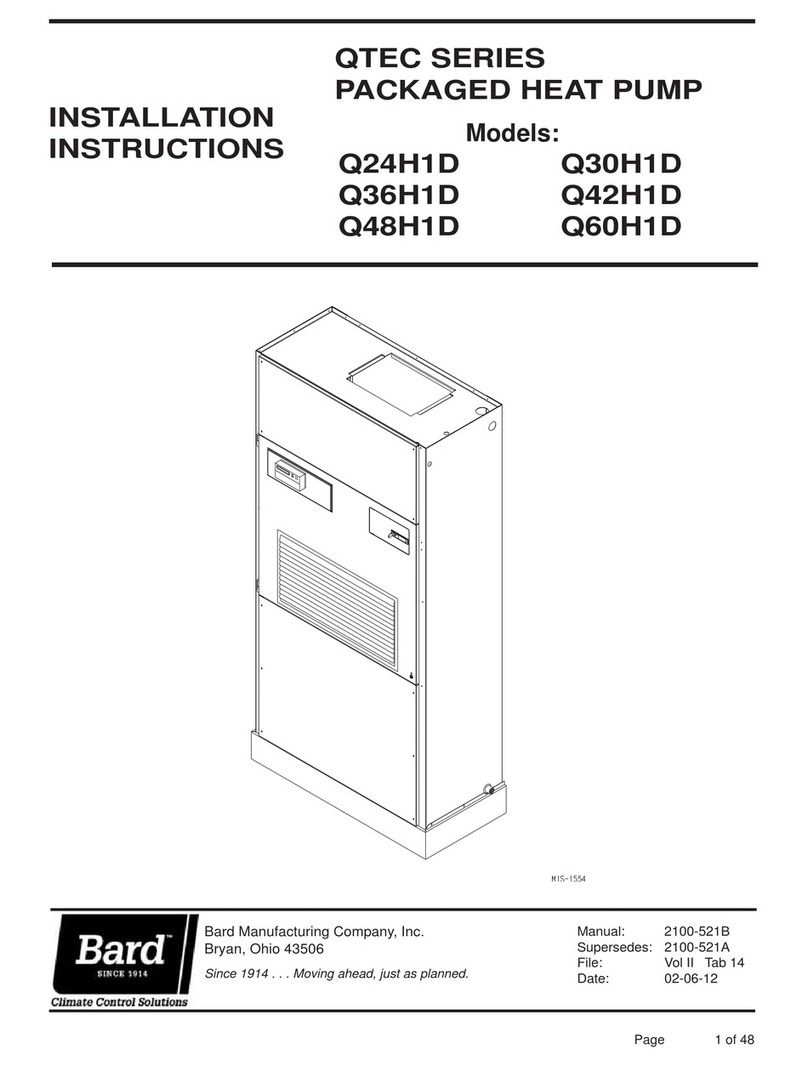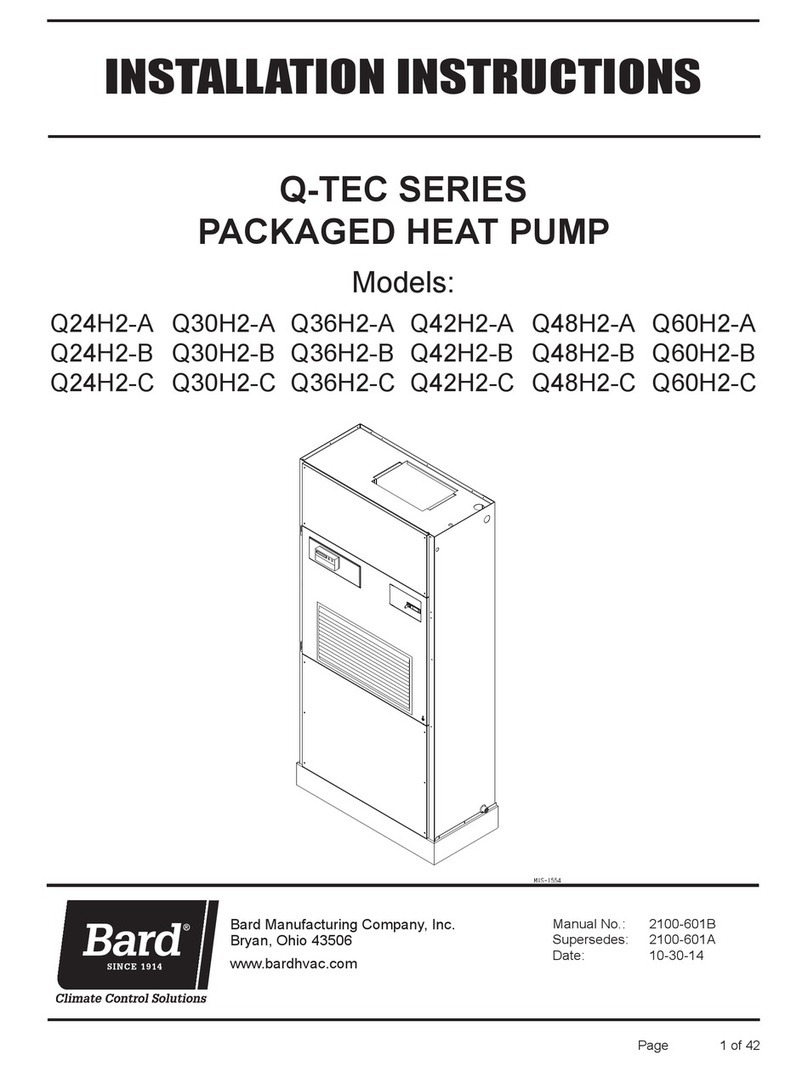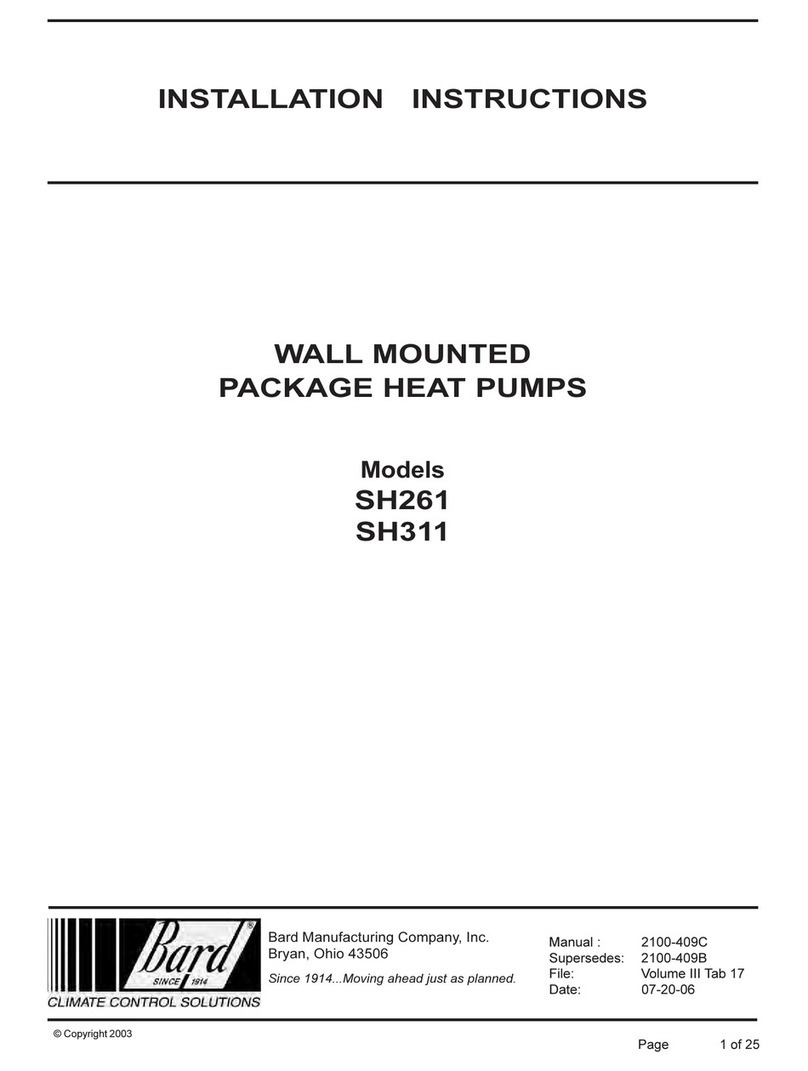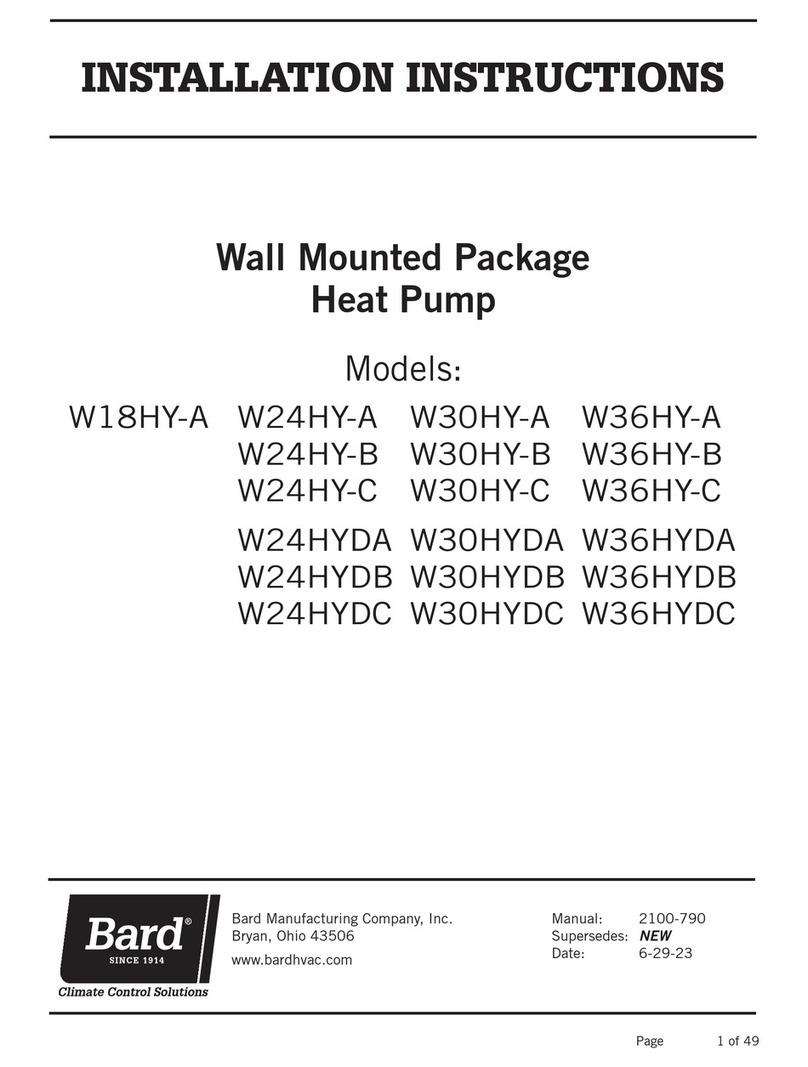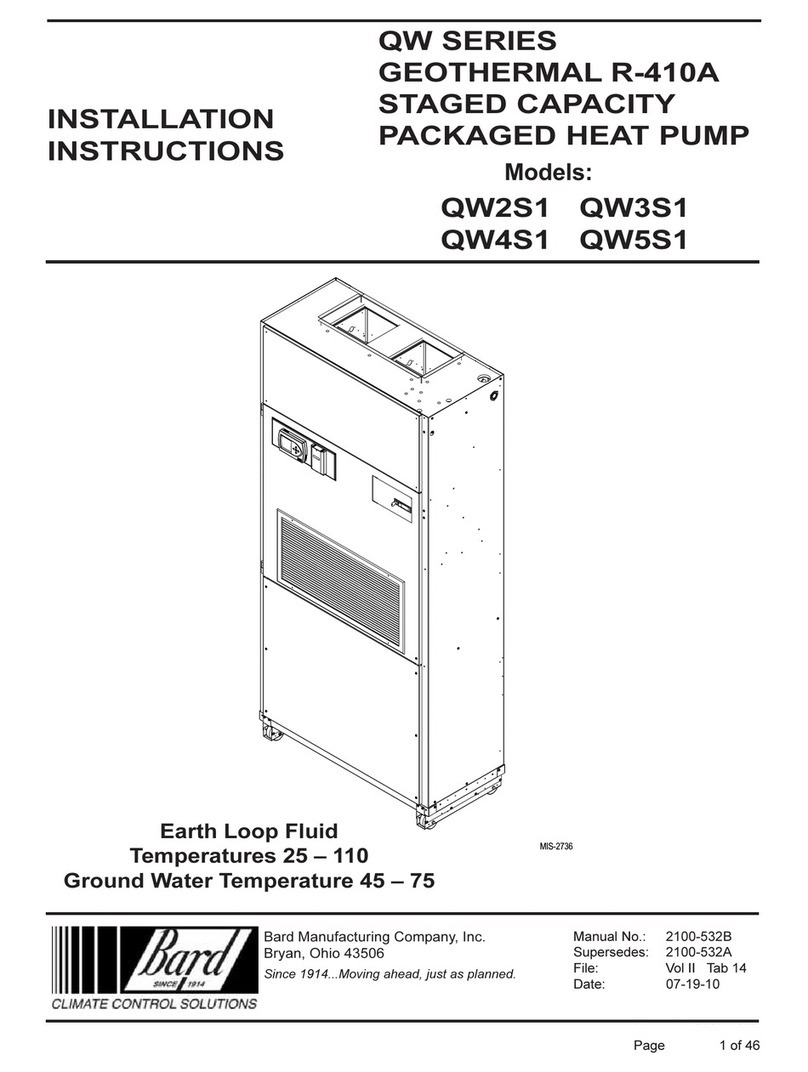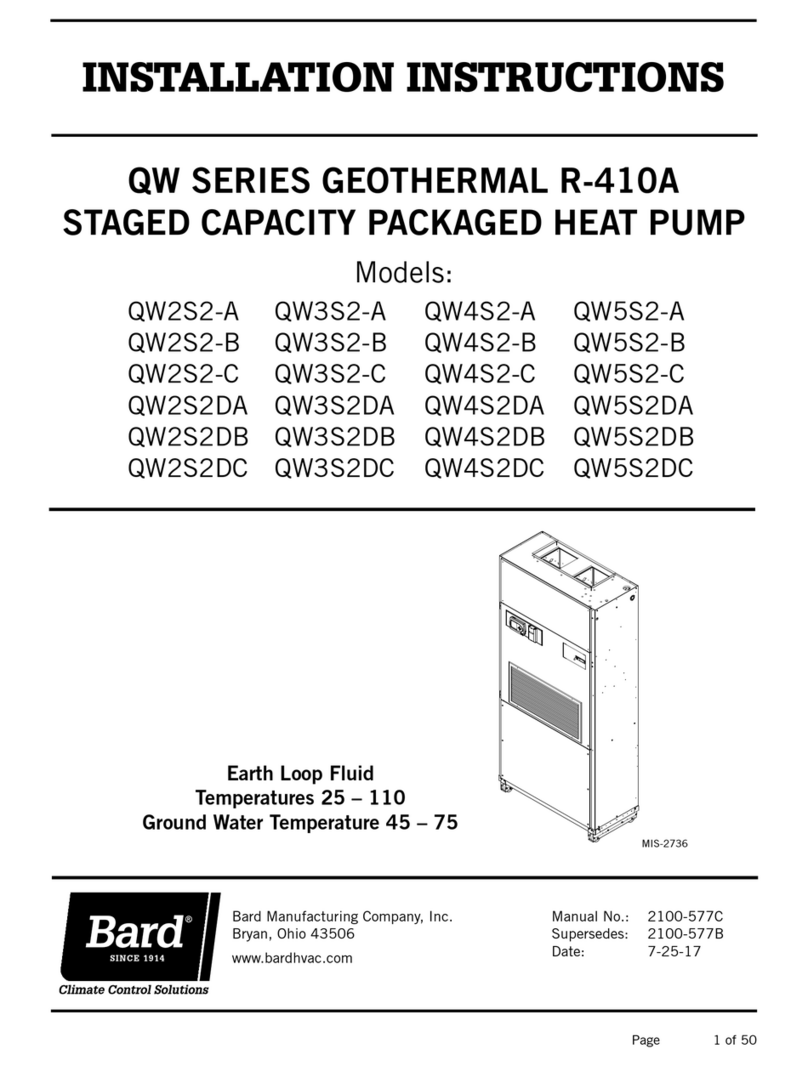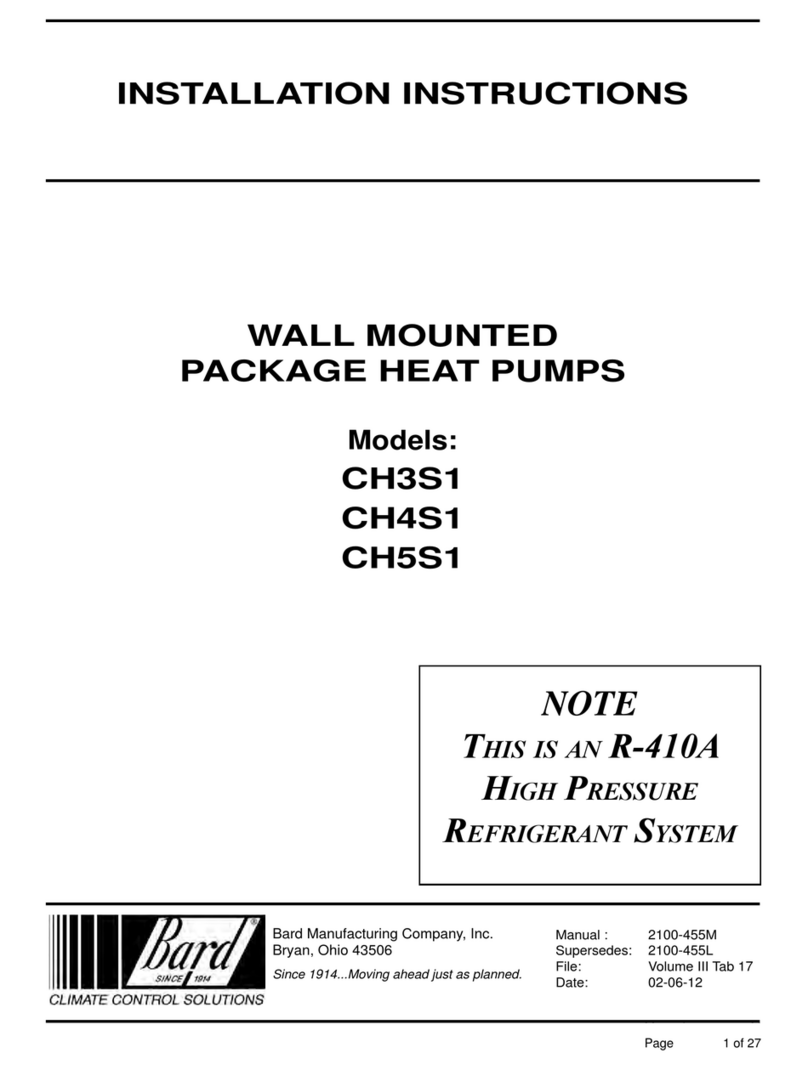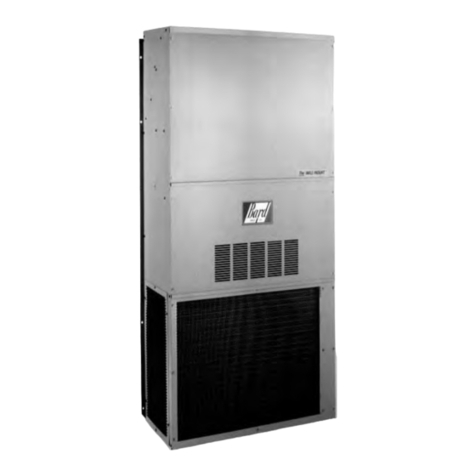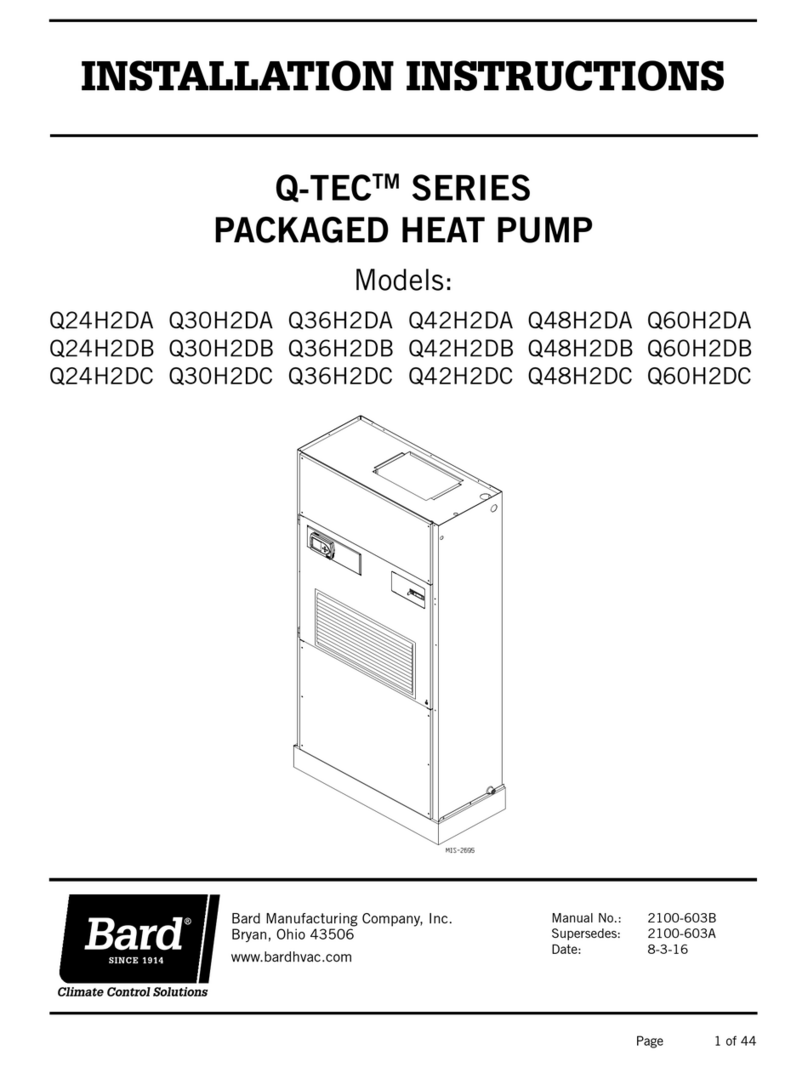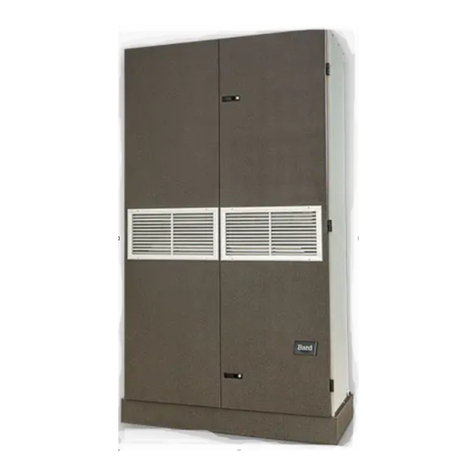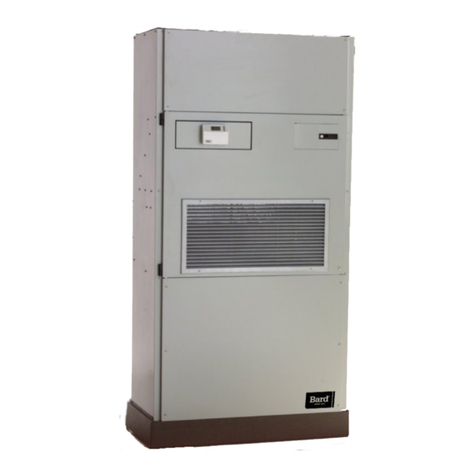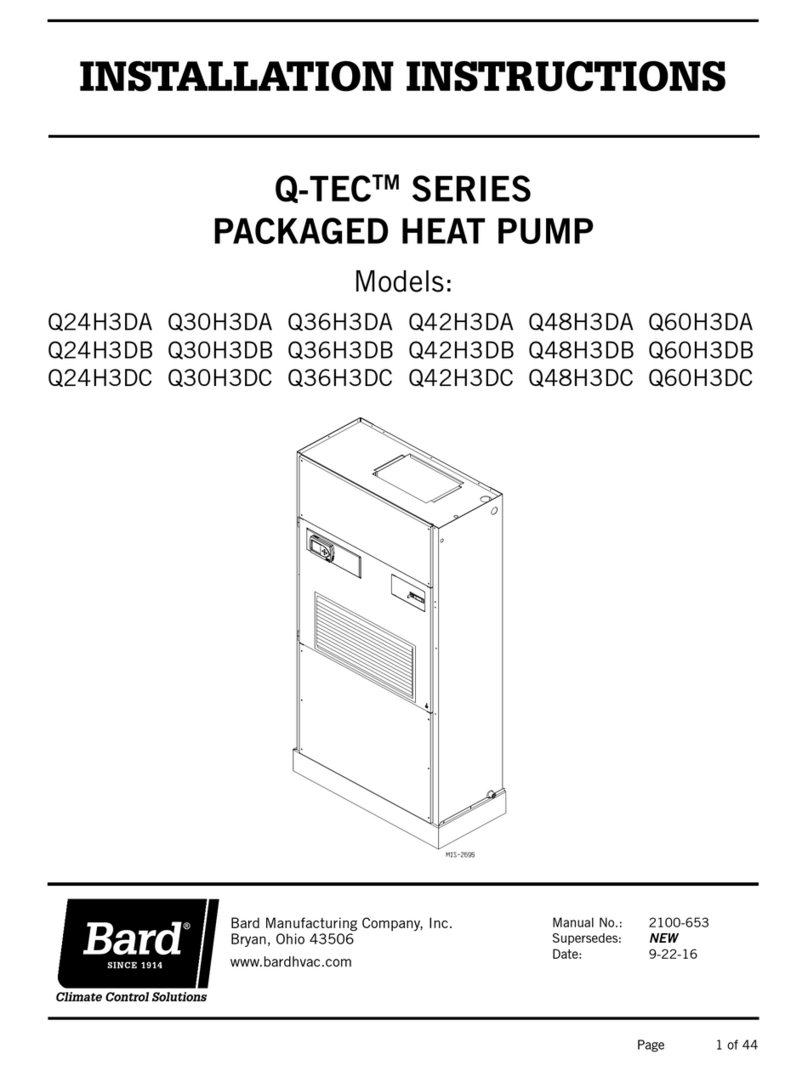
Manual 2100-586G
Page 7 of 25
Wall Mounting Information
1. Two holes for the supply and return air openings
must be cut through the wall as shown in Figure 3.
2. On wood frame walls, the wall construction must
be strong and rigid enough to carry the weight of
the unit without transmitting any unit vibration.
3. Concrete block walls must be thoroughly inspected
to ensure that they are capable of carrying the
weight of the installed unit.
Mounting the Unit
1. These units are secured by wall mounting brackets
which secure the unit to the outside wall surface at
both sides. A bottom mounting bracket, attached
to skid for shipping, is provided for ease of
installation, but is not required.
2. The unit itself is suitable for 0" clearance, but the
supply air duct ange and the rst 3' of supply
air duct require a minimum of 1/4" clearance to
combustible material. However, it is generally
recommended that a 1" clearance is used for
ease of installation and maintaining the required
clearance to combustible material. See Figure 3
for details on opening sizes.
3. Locate and mark lag bolt locations and bottom
mounting bracket location (see Figure 3).
4. Mount bottom mounting bracket.
5. Hook top rain ashing, attached to front-right of
supply ange for shipping, under back bend of top.
6. Position unit in opening and secure with 5/16" lag
bolts; use 7/8" diameter at washers on the lag
bolts.
7. Secure rain ashing to wall and caulk across entire
length of top (see Figure 3).
8. For additional mounting rigidity, the return air
and supply air frames or collars can be drilled
and screwed or welded to the structural wall itself
(depending upon wall construction). Be sure to
observe required clearance if combustible wall.
Placement
1. On side-by-side installations, maintain a minimum
of 20" clearance on right side to allow access to
control panel and heat strips and to allow proper
airow to the outdoor coil. Additional clearance
may be required to meet local or national codes.
2. Care should be taken to ensure that the
recirculation and obstruction of condenser
discharge air does not occur. Recirculation of
condenser discharge air can be from either a
single unit or multiple units. Any object such
as shrubbery, a building or a large object can
cause obstructions to the condenser discharge
air. Recirculation or reduced airow caused by
obstructions will result in reduced capacity,
possible unit pressure safety lockouts and reduced
unit service life.
For units with a draw through condenser, such as
the C**H 11EER, it is recommended there be a
minimum distance of 15' between the front of the
unit and any barrier to airow.
Required Steps after Final Placement
(C48H & C60H Units Only)
The compressor is secured to the unit base for
shipping. Although unit will perform as designed
with the compressor secured in place, there may be
noticeable additional noise and vibration. To obtain
the lowest noise and vibration levels, remove the
compressor shipping brackets after the unit is in its
nal operating location.
Remove the side grille to gain access to the compressor
shipping brackets. The brackets are located on the
compressor double isolation base at the front and rear
of the compressor. The brackets are secured to the unit
base with two (2) screws and secured to the isolation
plate with a 1/4" nut. Remove and dispose of the two
(2) screws and brackets. Re-install the 1/4" nut once
bracket is removed.
INSTALLATION
Heavy item hazard.
Failure to bolt the unit to the wall could
result in the unit falling. Follow all mounting
instructions.
Failure to do so could result in damage, injury
or death.
!WARNING





















